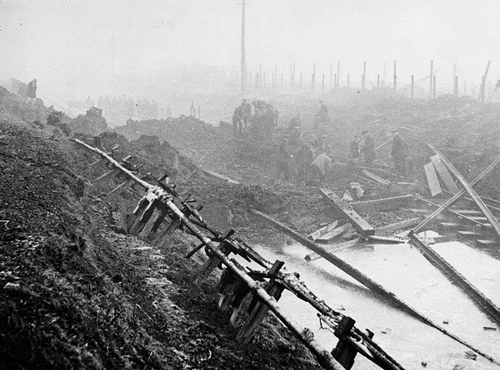Feltham Marshalling Yards
Feltham Marshalling Yard (originally known as Feltham Concentration Yard) was once one of the busiest in the country handling up to 7000 wagons per day. Nowadays the area is a nature reserve on land still owned by Network rail but some traces of its past were still there in 2011 if you looked hard enough.
The tunnel pictured was located under one of two humps where wagons would be pushed up at 2mph, uncoupled, chalked with their siding destination and then rolled down the incline to be switched into their correct location. Virtually all of the structures of Feltham Marshalling Yard have been removed so it was a real surprise to find this still existing in 2011. Large parts of the area have since been redeveloped and ironically its new use is as a railway yard again, in this case stabling for new South Western Railway passenger trains.
A little bit more on the history of the yards:
The opening of Feltham Marshalling Yards was more of an evolution than a ceremony on a specific date. Taking traffic from a previous shed at Strawberry Hill the project was initiated by the LSWR but was not fully complete until grouping. Key elements of the yards included a 65ft turntable , a mechanical coaling plant and a engine shed complete with a 50 tin overhead crane for assisting with repairs. Once fully operational around 80 steam locomotives operated at the location and it saw its first diesel shunters in 1954. The depot reduced in importance as road travel took off and although there were plans for it to continue after the demise of steam in 1967 the proposed diesel sheds were never built.
Feltham Marshalling Yards were a target in the Second World War. A land mine dropped at 3am one morning destroyed around 150 wagons but the yard was once again operational just six hours later. Elsewhere a bomb landed on the hump blowing the rails so high that they went over the nearby signal box. The yards were key in moving equipment destined for use in the D_Day landings by American and Canadian servicemen. Tanks, fuel supplies and even bridge parts transited the yard on their way to their coastal departure points.
If you would like to know more about this yard I would recommend buying a copy of Feltham Concentration Yard by Colin Chivers. With 276 pages dedicated to the site, including many photos of the yard in operation and a full history, it’s an excellent publication from The South Western Circle. It was first published in 2016, so if you are unable to purchase it from the SWC you may need to look for it via second hand outlets.
Feltham Marshalling Yard in its heyday with a wagon rolling away from the hump.

A look around Feltham Marshalling Yard in 2011
The tunnel under the gravity hump at Feltham Marshalling Yards. This was cleared for a short while before being resealed again. I’ve not been back to check but I’d imagine this may now have been completely removed as it would appear to be under the new SWR depot.
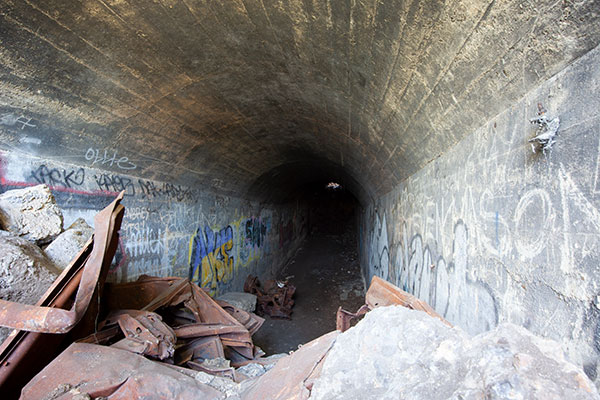
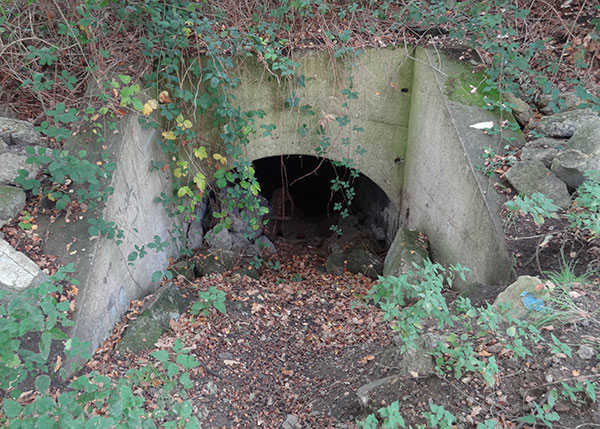
Further remnants of what was once Britain’s second largest sidings complex in Feltham, West London. This large buffer stop, made of several concrete blocks bolted together and laid on top of the rails as a form of friction stop. Once pushed back they could be pulled back into position by a locomotive being attached to the hook at the front and dragging it forwards.

Laying on its side, these are the remnants of the original staff access bridge , installed in January 1922, over the up and down Windsor lines.
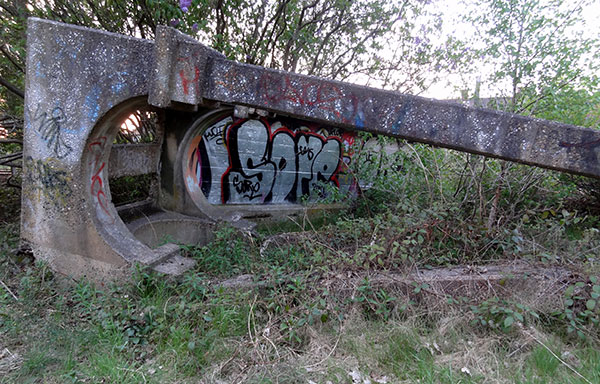
An old ladder gently rusting away in the overgrown old yards.
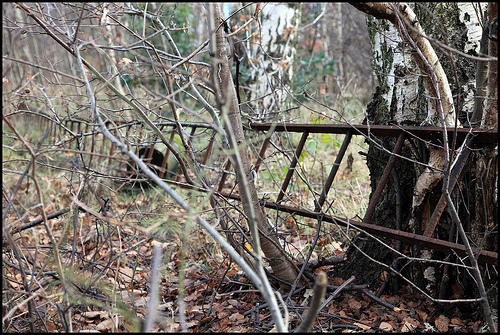
A more recent addition perhaps, this looks like a ceramic chair used to hold the third rail in place and is marked up BR.
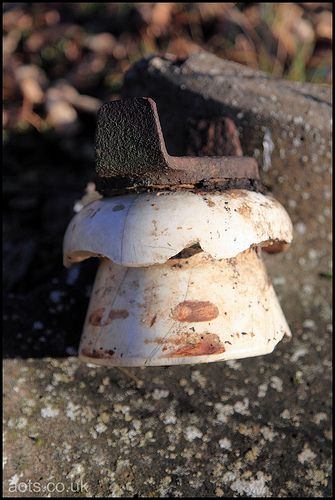
Feltham Yards was once home to a state of the art telecommunications system parts of which were found amongst the unchecked wilderness.
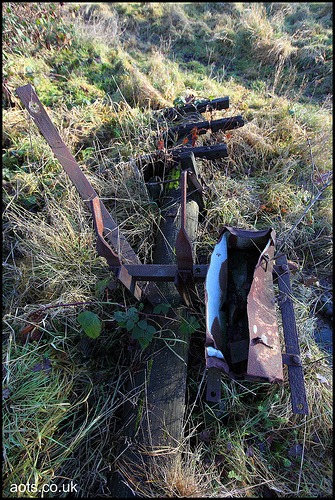
A couple of other structures found. I am unfamiliar of the purpose of these- if you know, please do get in touch!
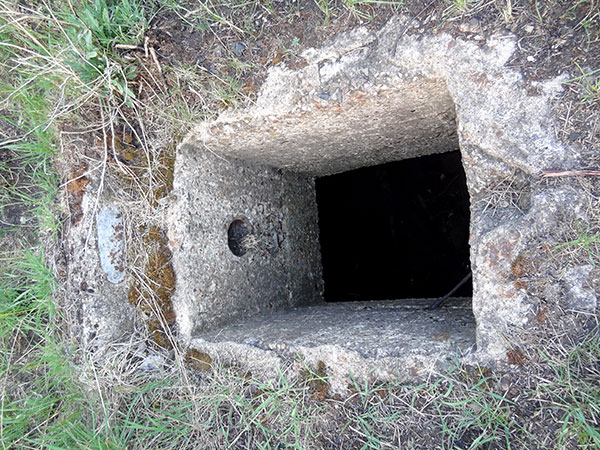
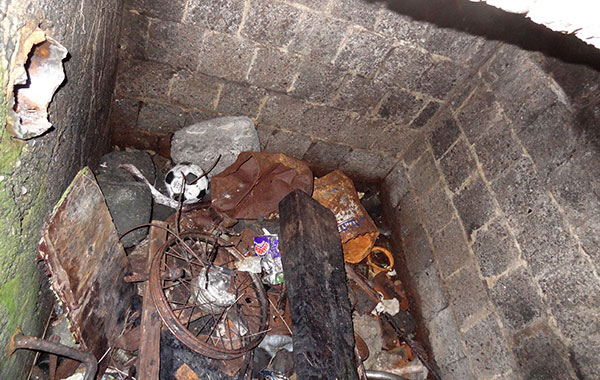
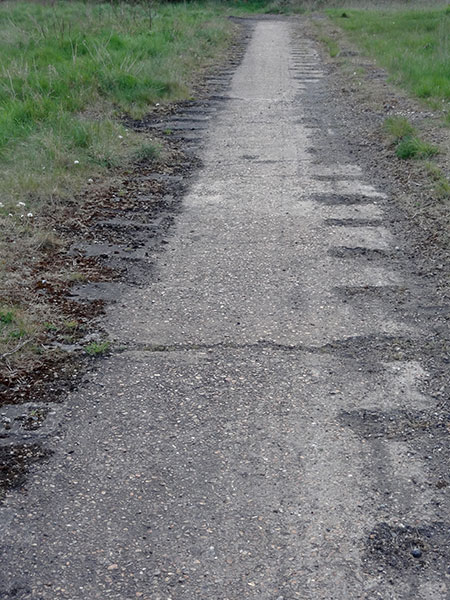
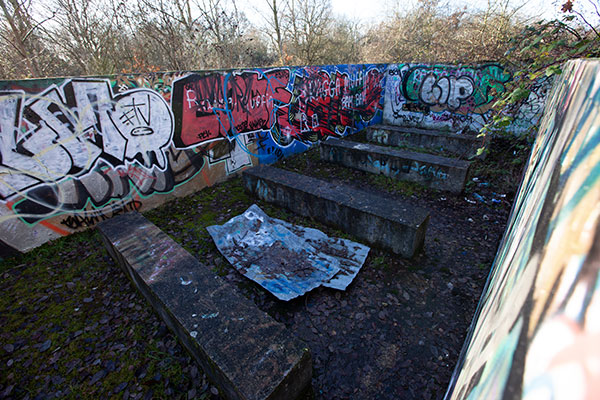
There’s a further tunnel which diverted the nearby river directly under the yard, along with its adjacent overflow tunnel You can read all about that here.
Further historical photos for context
I am unsure of the copyright status on these. They were provided to me via a local resident.
The engine shed and coaling stage at Feltham Marshalling Yard
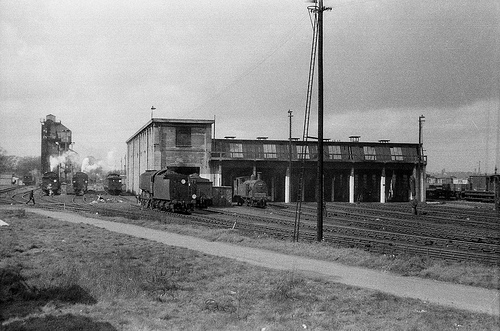
Bomb damage in the yard during the Second World War. Amazingly operations resumed within 24 hours – unexploded bombs actually took longer to resolve.
